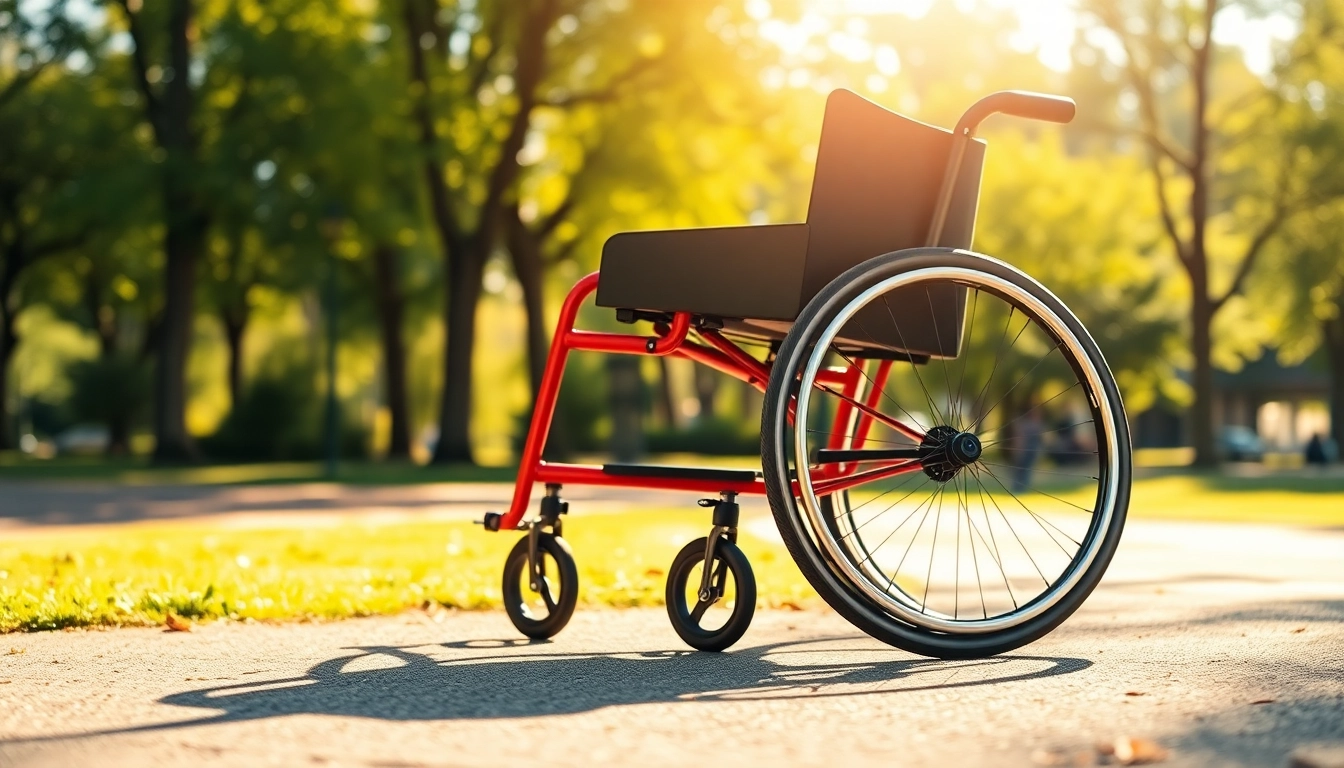Understanding Manual Wheelchairs
Definition and Basics of Manual Wheelchairs
A manual wheelchair is a mobility device designed for individuals who are unable to walk or have limited mobility. These wheelchairs are propelled by the user or an attendant, featuring large wheels and smaller front casters that provide stability and maneuverability. Unlike electric wheelchairs, manual wheelchairs rely on human energy for movement, making them an accessible, cost-effective option for many users. They come in various designs to cater to different needs, from everyday transportation to specialized outdoor activities.
Different Types of Manual Wheelchairs
Manual wheelchairs can be categorized into several types based on their design, intended use, and user requirements. Some of the prominent types include:
- Standard Manual Wheelchairs: These basic wheelchairs come with a simple frame and are typically lightweight, making them easy to handle and transport.
- Transport Wheelchairs: Designed for short-distance travel, transport wheelchairs often have smaller wheels to reduce weight and are typically pushed by an attendant.
- Sport Wheelchairs: Optimized for individuals who engage in athletic activities, sport wheelchairs are designed for speed and manoeuvrability.
- Standing Wheelchairs: These specialized wheelchairs allow users to transition from a seated to a standing position, promoting better circulation and muscle strength.
- Pediatric Wheelchairs: Tailored for children, pediatric wheelchairs prioritize comfort, safety, and functional adjustments as children grow.
Key Functions and Benefits of Manual Wheelchairs
Manual wheelchairs serve several essential functions and offer numerous benefits:
- Accessibility: Manual wheelchairs facilitate mobility for individuals with disabilities, promoting independence in daily activities.
- Cost-Effectiveness: Compared to electric wheelchairs, manual options are generally less expensive to purchase and maintain.
- Physical Activity: Propelling a manual wheelchair provides users with an opportunity to exercise their upper body muscles.
- Customizability: Many manual wheelchairs are adjustable, allowing for optimal seating positions and comfort tailored to the user’s needs.
Features to Consider When Selecting a Manual Wheelchair
Weight and Portability Considerations
When choosing a manual wheelchair, weight plays a significant role in its functionality. Lighter models are generally easier to lift and transport, especially for users who may need to carry their wheelchair into cars or public transportation. Look for wheelchairs made from lightweight materials, such as aluminum or titanium, which offer durability without the excess weight.
Adjustability and Comfort Features
Comfort is paramount in a manual wheelchair, as users may spend extended periods in them. Features such as adjustable armrests, seat depth, and backrest height can make a significant difference in user experience. Additionally, cushions and padded seats not only provide comfort but also promote proper posture and reduce the risk of pressure sores. It’s essential to ensure adjustments can be made easily to accommodate different body types and preferences.
Durability and Material Quality
Durability is a critical factor in the lifespan and performance of a manual wheelchair. High-quality materials such as steel and aluminum should be considered, as they can withstand daily wear and tear. Furthermore, look for wheelchairs with reinforced welds and strong frame designs to ensure they can handle various terrains and resist damage over time. Regular inspections can also help maintain the structure and function of the wheelchair.
Common Challenges in Using Manual Wheelchairs
Navigating Different Terrains
One of the most common challenges users face with manual wheelchairs is navigating uneven or challenging terrains. Surfaces like gravel, grass, and steep inclines can pose significant obstacles. It’s critical for users to evaluate their environments and consider using wheelchairs designed with larger wheels and superior traction for outdoor activities. Many manual wheelchairs come with various wheel sizes and patterns to assist in maneuvering various surfaces.
Managing User Fatigue and Physical Strain
Propelling a manual wheelchair can lead to user fatigue, particularly in upper body muscles. Proper training in technique, such as using core muscles to push and incorporating resting periods, can help minimize strain. Additionally, users should select wheelchairs with an appropriate seat height to ensure they can propel the chair with relative ease. Ergonomic equipment, such as push handles and gloves, can also enhance comfort during extended use.
Assistance and Accessibility Options
While many individuals can operate a manual wheelchair independently, assistance may be required in certain situations. It is beneficial to explore local resources that offer support for wheelchair users, including skilled aides and community services. Accessibility options like ramps, curb cutouts, and adapted facilities also play a role in enabling manual wheelchair users to move comfortably and safely in various environments.
Best Practices for Manual Wheelchair Maintenance
Routine Check-ups and Cleaning
For optimal performance and longevity, regular maintenance of a manual wheelchair is essential. This includes routine check-ups for signs of wear on wheels, brakes, and other components. Cleaning the wheelchair regularly, especially the fabric parts, can prevent the buildup of dirt and bacteria, enhancing both aesthetic and hygienic properties. Simple tasks, such as lubricating the moving parts and checking tire pressure, can greatly increase the life of the wheelchair.
Component Replacement and Repairs
Over time, certain components may require replacement or repair due to wear from regular use. Users should familiarize themselves with the standard lifespan of different parts, such as tires and brake pads, and seek professional help when necessary. Keeping a toolkit for minor adjustments and repairs can save time and money, allowing users to maintain their mobility with minimal disruption.
Upgrading Accessories for Enhanced Experience
Upgrading accessories can significantly improve a user’s experience with their manual wheelchair. Options such as custom cushions, cup holders, trays, and attachable bags can offer convenience and comfort during daily activities. Assessing user needs and exploring available accessories can provide enhanced functionality and personalization to suit individual preferences.
Real-Life Experiences with Manual Wheelchairs
Case Studies: Users Sharing Their Journey
Real-life case studies offer valuable insights into how individuals utilize manual wheelchairs in their daily lives. For instance, many users report increased independence and mobility after switching to a manual wheelchair tailored to their specific needs. One user, who transitioned from a transport wheelchair to a customized sports model, found that engaging in adaptive sports not only improved physical fitness but also boosted social connections.
Success Stories and Overcoming Obstacles
Success stories from manual wheelchair users demonstrate resilience and innovation. Some individuals have found creative solutions for overcoming access challenges, such as designing their entrance ramps or connecting with local advocacy groups to push for more inclusive public spaces. Sharing these stories can inspire others facing similar challenges, emphasizing the importance of community and support in the journey to mobility.
Getting Involved in the Wheelchair Community
Engaging with the wheelchair community can provide emotional support and valuable resources. Users are encouraged to join local or online groups where they can share experiences, access information, and learn about new products or services. Participation in community events, volunteer opportunities, and advocacy work can foster a sense of belonging and purpose for individuals using manual wheelchairs.



